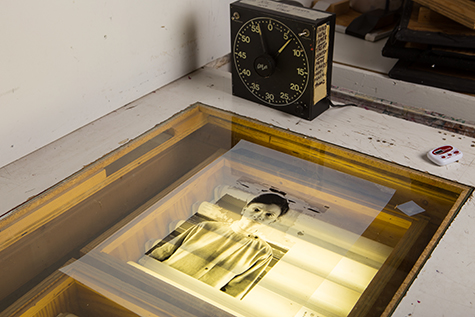The following assessments can be used for this lesson using the downloadable assessment rubric.
- Communication 3
- Communication 4
- Creative process 2

Photo by Sean Carroll
Review the Preparing and Exposing Photographic Silkscreens Powerpoint, then ask students:
When all groups are finished exposing and drying their screens, complete the following:
The following assessments can be used for this lesson using the downloadable assessment rubric.